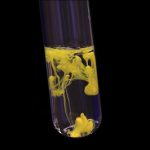Besides jewelry, platinum group metals (PGMs) are known for their use in catalytic converters for automobiles and other equipment that use combustion engines. The demand for catalytic converters is so strong that it affects the whole PGM market. But why do these devices require expensive precious metals to work?
The purpose of a catalytic converter is to create cleaner emissions. Although catalytic converters look like a filter on the inside, they don’t clean exhaust by filtering it. Instead, they chemically convert the toxic substances in engine exhaust into inert or less toxic substances. This reaction is catalyzed by the PGMs inside the converter.
The filter-like portion of a catalytic converter is actually a substrate plated with an extremely thin layer of PGMs. When exhaust passes through this section, the ambient heat and PGMs kick start multiple chemical reactions. Rhodium enables the reduction of nitrogen oxides to nitrogen and oxygen. Palladium promotes the oxidation of carbon monoxide to carbon dioxide, and the oxidation of unburnt hydrocarbons to carbon dioxide and water. Platinum helps with both reduction and oxidation reactions while also giving the substrate more corrosion resistance.
Most of the world’s PGMs go toward the production of catalytic converters, so it’s important to recycle these devices to reclaim the rare metals inside. At MGS, we cannot accept whole catalytic converters – we can only accept the PGM components (pictured). For more information and a payout quote, please contact us.











